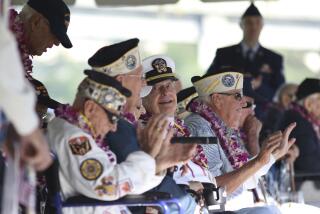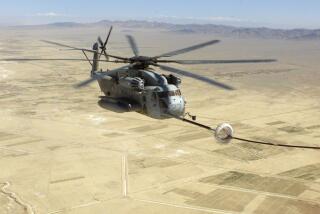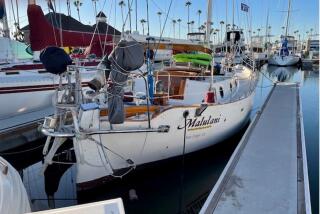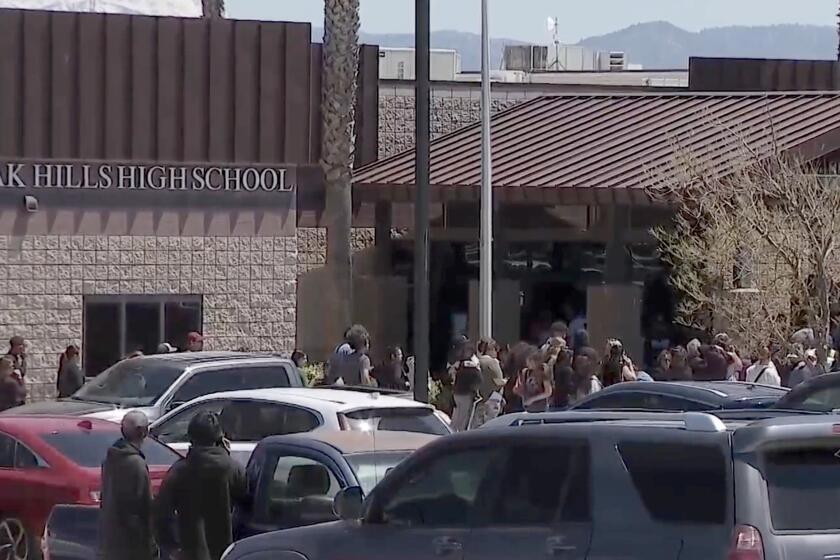Remains of Marine who disappeared in 1944 return to U.S.
His last letter home to his father is written in tight script on paper that has yellowed. It’s dated Feb. 20, 1944.
“Just a line Dad to say goodbye and don’t worry too much,” wrote Marine 1st Lt. Laverne A. Lallathin, 22. “I’m going over to end this thing as soon as possible. Buy as many bonds as you can and pray that I will be all-right.”
A month later, Lallathin vanished along with six crew members of the B-25 bomber he was piloting from Espiritu Santo, the largest island in the South Pacific nation of Vanuatu.
“My grandmother went to her grave not knowing what had happened to her only son,” said Verne Rainey, 60, Lallathin’s nephew. “Not knowing had a huge effect on her throughout her life.”
Now, more than 68 years after the uncle Rainey never met disappeared during World War II, Lallathin has finally come home.
The remains of the Oklahoma native were found beginning in 2009 by members of the Defense Department’s Joint POW/MIA Accounting Command. The crash site was among those sought during a three-year effort to comb the islands around Espiritu Santo, a key naval and air base during the war.
“That was a busy area, and we have a lot of downed planes there,” said Hattie Johnson, head of POW/MIA affairs for the Marine Corps.
About 74,000 U.S. troops remain missing from World War II. Finding them is part detective work, part luck.
Initially, the fate of Lallathin and his crew was no mystery. The plane was located a month after it crashed into a mountainside during severe weather. A report was written — and promptly disappeared, lost in the chaos of war, Johnson said.
In the late 1980s, a private team searching for the remains of another pilot stumbled across the wreckage of Lallathin’s B-25 — the clue that eventually led to his repatriation.
On Monday, Johnson gave Lallathin’s dog tags to Rainey and his sister, Mellissia Christensen, during an informal memorial in Laguna Woods Village, where Christensen lives.
The siblings provided DNA samples that matched that of Lallathin’s left femur — all that remains of their uncle.
“We knew Uncle Verne probably better than most people whose uncles are alive,” Christensen, 61, said.
“We were very close to our grandparents, and they were always talking about him,” she said. “They continued to hope and pray that someday he’d come home and walk through that front door.”
Rainey was born Donald Laverne Rainey, but from a young age he was called Verne.
“My grandmother insisted that somebody carry on his name,” Rainey said.
And so Verne Rainey has. “I was never really a Donald,” he said.
His uncle will be buried this year in Arlington National Cemetery.
More to Read
Start your day right
Sign up for Essential California for news, features and recommendations from the L.A. Times and beyond in your inbox six days a week.
You may occasionally receive promotional content from the Los Angeles Times.






